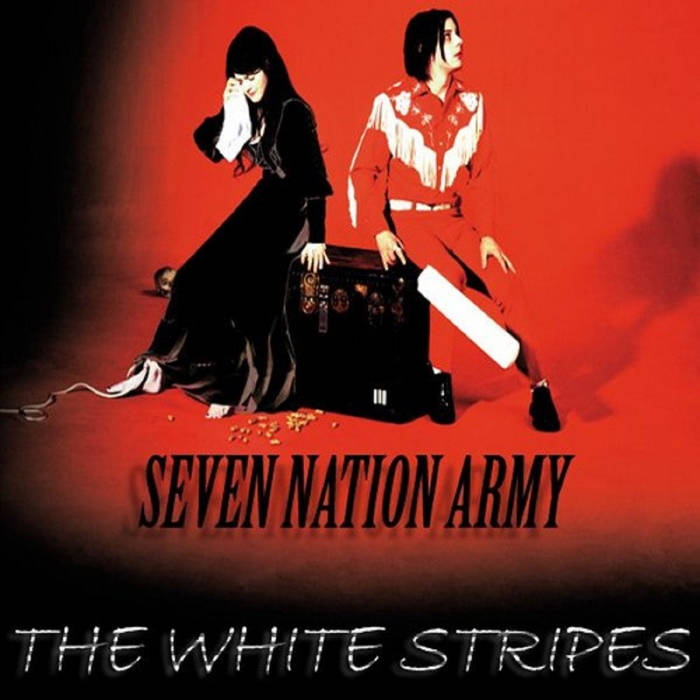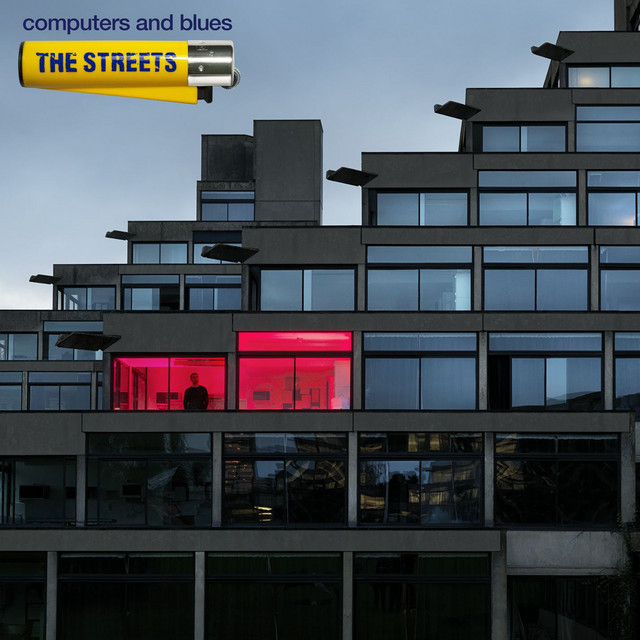 When “I Believe in a Thing Called Love” by The Darkness first hit airwaves in 2003, it felt like a lightning bolt out of a neon-lit, spandex-clad sky. A bold and unabashed throwback to the over-the-top glitz of 1980s glam metal, the song was simultaneously a parody, a tribute, and a legitimate rock anthem in its own right. It was a risk. Released at a time when the music industry was increasingly dominated by nü-metal, emo, and indie sleaze, The Darkness stood out like a rhinestone in a sea of flannel and angst. But that risk paid off. “I Believe in a Thing Called Love” became an international sensation, not just because of its absurd falsettos or pyrotechnic guitar solos, but because it carried with it the essence of something rock had been missing—fun.
When “I Believe in a Thing Called Love” by The Darkness first hit airwaves in 2003, it felt like a lightning bolt out of a neon-lit, spandex-clad sky. A bold and unabashed throwback to the over-the-top glitz of 1980s glam metal, the song was simultaneously a parody, a tribute, and a legitimate rock anthem in its own right. It was a risk. Released at a time when the music industry was increasingly dominated by nü-metal, emo, and indie sleaze, The Darkness stood out like a rhinestone in a sea of flannel and angst. But that risk paid off. “I Believe in a Thing Called Love” became an international sensation, not just because of its absurd falsettos or pyrotechnic guitar solos, but because it carried with it the essence of something rock had been missing—fun.
At its core, the song is a celebration of over-the-top romance, both musically and lyrically. It doesn’t merely hint at passion or flirt with metaphor. It dives headfirst into the kind of head-spinning, heart-racing infatuation that makes people do irrational things—like believe in love at first sight, or wear a glittery catsuit in public. There’s an earnestness buried beneath the bombast, a sincerity in the theatrics, and that’s what made the song stand the test of time. It isn’t ironic, even if it’s humorous. It’s earnest in its exaggeration, and that’s a very tricky balance to strike.
The opening guitar riff is immediately iconic—a blend of AC/DC crunch and Queen swagger, played with such conviction that it somehow feels both timeless and brand new. As soon as Justin Hawkins’ impossibly high-pitched voice kicks in, the listener is either sold or stunned. There is no middle ground. His falsetto is an act of audacity, a dare to the listener to take him seriously even as he belts out lyrics like, “Touching youuuu… touching meeee!” The thing is, he sells it. There’s no hint of shame or reservation. That total commitment—both musically and aesthetically—elevates the song from novelty to classic.
Part of what made “I Believe in a Thing Called Love” such a phenomenon is its relationship to rock’s history. In the early 2000s, rock music was going through something of an identity crisis. Grunge had faded, post-grunge had become formulaic, and indie rock was leaning heavily into irony and lo-fi minimalism. Then came The Darkness—larger-than-life, flamboyant, and absolutely unapologetic about their influences. They weren’t trying to be cool in a conventional sense. They weren’t rebelling against commercialism or society. They were rebelling against boredom. Their sound was a rocket-fueled distillation of Def Leppard, Queen, Van Halen, and a dash of Thin Lizzy, delivered with more swagger than the sum of its parts. Yet for all the retro references, it never felt like a cover band. There was something genuinely fresh about how they resurrected the spirit of glam without simply copying it.
The music video sealed the deal. With its intergalactic setting, lightning bolts, giant tentacle monsters, and band members in glittering space suits, the visual was as campy and glorious as the song itself. It was like watching Queen and Spinal Tap get drunk and launch a mission to Mars. And somehow, it worked. The overindulgence became part of the charm. At a time when music videos were increasingly serious and cinematic, The Darkness reminded us that rock and roll could be ridiculous and sublime at the same time.
But behind the theatricality was real talent. Justin Hawkins is not just a showman—he’s an accomplished guitarist and vocalist. His brother Dan Hawkins, the band’s rhythm guitarist, brings a tight, crunchy tone that anchors the song. The rhythm section—bassist Frankie Poullain and drummer Ed Graham—hold down the fort with a solid groove that lets the rest of the band soar into the stratosphere. That’s the real secret of “I Believe in a Thing Called Love”: it’s not just a joke. It’s an impeccably crafted song. From the ascending pre-chorus to the glorious chorus that explodes like fireworks, every piece of the puzzle fits perfectly. It’s got hooks, dynamics, and energy to spare.
Lyrically, the song is simple, but not simplistic. The lines “I believe in a thing called love / Just listen to the rhythm of my heart” could be corny in lesser hands, but in the world The Darkness creates, they feel like gospel. The song captures that rare and thrilling moment when romance feels like destiny, when infatuation blinds you to logic, and the only thing that matters is the way someone makes you feel. It’s a universal theme, delivered in an utterly unique package. The absurdity becomes the point. The song’s campiness allows people to let their guard down. It’s not vulnerable in the traditional sense—it’s bold, loud, and proud—but it is emotionally open. There’s a kind of joy in its exaggerated sentimentality. It dares you to feel something, even if you have to laugh a little while doing it.
The song became a phenomenon almost overnight in the UK, reaching number two on the charts and quickly turning The Darkness into festival headliners. They were embraced by audiences craving something different, something flamboyant, something fearless. They brought back the guitar solo—not as a technical showoff moment, but as a celebration. They brought back stage costumes, falsettos, and frontmen who actually performed. And they did it all without a hint of postmodern detachment. Even in the United States, where British glam acts often face an uphill battle, the song gained traction, appearing in films, commercials, and eventually taking on a kind of cult status among music lovers who saw through the glitter to the gold underneath.
“I Believe in a Thing Called Love” is also notable for how it’s aged. While many early 2000s songs sound stuck in their time, The Darkness’ anthem seems suspended outside of time. That’s the beauty of going all-in on a stylistic throwback: it’s never tied to current trends, and therefore can’t be dated by them. And yet, despite its retro inspiration, the song still feels modern in its mixing, its pacing, and its clarity. It’s a bridge between the past and the present, a glam rock revival that stood on its own two (platform-booted) feet.
The legacy of the song is bigger than the band itself. While The Darkness has continued to release music and tour, and has maintained a strong fanbase, “I Believe in a Thing Called Love” remains their defining moment—the kind of song that transcends the band that created it. It has shown up in talent shows, karaoke bars, wedding receptions, movie soundtracks, and viral videos. It’s a song people put on when they need a boost of confidence, a jolt of adrenaline, or just a reminder that it’s okay to be a little ridiculous sometimes. It’s empowerment by way of falsetto. It’s self-love disguised as a love song.
In retrospect, the timing of its release feels almost prophetic. Just as rock seemed to be losing its sense of showmanship, The Darkness came along and reminded everyone that entertainment is not a dirty word. They brought back the joy, the spectacle, the drama. And they did it without pandering or compromising. “I Believe in a Thing Called Love” isn’t just a great rock song—it’s a mission statement. A declaration that melody still matters, that guitar solos can still raise the hair on your arms, and that sometimes, believing in love (or even pretending to) is the most punk thing you can do.
Perhaps what makes the song so beloved is that it doesn’t ask the listener to think too hard. It asks them to feel. It invites them to crank the volume, belt out the chorus, and maybe even air-guitar a little. And in a world that often demands cynicism, that invitation is a gift. It’s no surprise that the song is a go-to for celebrations, for moments when people want to feel alive and a little outrageous. It’s the soundtrack to a thousand joyous moments, because it understands something essential: love, music, and joy are all connected. They’re things we choose to believe in, despite all evidence to the contrary.
“I Believe in a Thing Called Love” by The Darkness remains one of the most iconic rock songs of the 21st century not because it changed the genre, but because it reminded us of what the genre is capable of. It’s exuberant, unashamed, and deeply human in its theatricality. Whether you’re a rock purist, a casual fan, or someone who just likes songs that make you smile and sing along, this track has something to offer. It’s an anthem of optimism disguised in sequins and shrieks, a reminder that music is supposed to be fun, and that love—no matter how absurd it seems—is always worth believing in.


